Review
It’s generally agreed that Renault has made a big leap forward with the new Laguna.
The previous model was notorious for being about as reliable as Paul Burrell’s witness statements, but so far its replacement looks to be presenting much more credible evidence.
However, what Renault really wants is to take on the sector leaders, the Ford Mondeo and BMW 3 Series.
Both are very different vehicles, but have in common not just comfort, reliability and economy, but fun too.
It’s this joi-de-drive that Renault reckons is key to getting to the top of the sector and, much improved as the new Laguna is, it can’t compete with the Blue Oval or the BMW when it comes to putting a smile on drivers’ faces.
Or can it?
The latest incarnation of the new Laguna is the GT.
Sitting just above the Dynamique S on the trim level ladder, the GT aims to up the fun factor, thanks to a chassis developed by Renault Sport Technologies (those responsible for a succession of fast and fun Clio hot hatches).
Its unique selling point is an all-new Active Drive system, featuring four-wheel steering. The concept is not new – Honda featured a similar system on the Prelude in the 1980s, and Nissan took the concept further in the late 1990s.
But with the advent of traction and stability control, the trend for steering with the back wheels as well as the front was left to gather dust in a cupboard.
Now Renault, thanks to its close ties with Nissan, has looked at its Japanese counterpart’s efforts and had its own crack at it.
Where the old systems were essentially mechanical, Renault’s version uses clever electrical systems to fine tune control of the rear wheels.
The GT driver’s inputs are monitored every 10 milliseconds and instructions are then sent to the back wheels.
Below 38mph, the rear wheels turn up to 3.5 degrees in the opposite direction to the fronts, which reduces the steering input needed to turn and reduces the turning circle to a level equivalent to the much smaller Clio.
Above 38mph, the focus turns to steering precision, with the rear wheels turning in the same direction as the fronts, countering the centrifugal force that tends to force the rear end of the car outwards.
The effect is increased stability through the twisty bits.
The ESP involvement is delayed, and deploys only when necessary, allowing for harder cornering and also more stable braking should the wheels find asymmetrical levels of grip.
Renault says that mechanically the system is a simple one, and as such SMR costs should be the same as a Laguna without Active Drive.
To go with this hi-tech chassis, Renault has made two engines available in the GT – a 2.0-litre turbocharged petrol with 205bhp swiped from the Renaultsport Megane and, more importantly for business drivers, a new 180bhp 2.0-litre dCi diesel with an impressive 295lb-ft of torque.
This means a 0-62mph time of 8.5 seconds for the hatch version, fuel economy of 43.4mpg and CO2 emissions of 172g/km.
From a styling point of view, the GT is differentiated from the common-or-garden Laguna by new front air intakes, headlamps with a black background and a larger front grille, as well as shiny black door mirrors, new 18-inch alloys and an exclusive paint colour – Malta blue.
Three other colours are also available.
Inside, the GT gets aluminium pedals and gearknob and some rather swanky leather and alcantara sports seats.
Prices start at £21,050 for the petrol hatch and £21,220 for the diesel, while the Sport Tourer estate is just under £1,000 more.
The fleet to retail split of the Laguna range is around 70/30, and the GT is expected to reflect that.
Behind the wheel
I might as well get straight to it – yes, the Active Drive system works. Very well, in fact.
The difference from the standard Laguna is marked, and makes for a very entertaining drive.
#FN_ART_SPLIT#
In the interests of journalistic investigation I pushed the GT far harder than most fleet drivers would (or should), and only by really barrelling into a bend could any kind of understeer be provoked.
At more normal speeds, the GT is lithe and nimble on turn-in, and you can really feel the back working to maintain balance and stability through a corner.
The new diesel engine is impressive, although it needs to be kept in the power band to get the sporty best out of it.
Before the turbo kicks in, the throttle response is a little lethargic, but keep it on the boil and there’s usable oomph right up to the red line.
The petrol engine is also a good one, although with such a small price difference between the two units I can’t really see a case for choosing it over the diesel.
I’m no fan of the styling of the new Laguna, but in Malta blue, with the glossy black touches on the wing mirrors and door pillars, it’s a decent-looking car and drew numerous admiring glances during our test drive.
Verdict
Thanks to the chassis development by Renault Sport Technologies, the handling and enjoyability of the Laguna has been transformed in the GT.
he Active Drive system is impressive, and should it get a good response from the public we may well see it in future models, which would be a good thing.



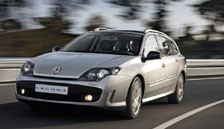
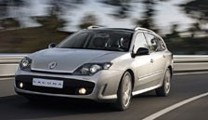
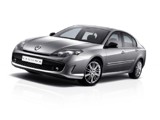
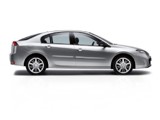
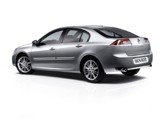
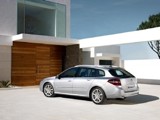
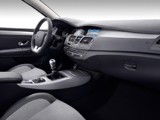
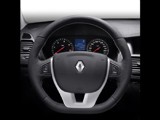
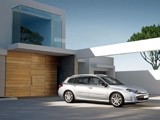












Login to comment
Comments
No comments have been made yet.